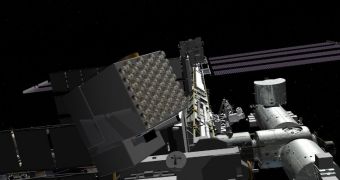The American space agency could finally approve the development of the Neutron Star Interior Composition Explorer (NICER), a new spacecraft that will be destined to study neutron stars. The probe is currently still just a proposal, but arguments in its favor are multiplying.
The deputy principle investigator of the new mission is Dr. Zaven Arzoumanian, who is based at the NASA Goddard Space Flight Center (GSFC), in Greenbelt, Maryland. He explains that the spacecraft could be ready for launch as early as the summer of 2016.
NICER would not be a stand-alone space vehicle, but rather a detector to be installed on the outer shell of the International Space Station (ISS). From this vantage point, it would have all the access it needs to study a large number of neutron stars.
At this point, NASA is considering this probe to be a potential Explorer Mission of Opportunity. It was classified as such in September, 2011, when the space agency selected it for future development. The GSFC team got $250,000 for an implementation concept study, which must be ready in 11 months.
A total of 20 submissions were forwarded to NASA, which only selected five of them. In February 2013, a panel of experts will have to decide which of the proposals is selected for further development. It is also possible that the agency might select more than one mission.
According to Arzoumanian, NICER's main feature will by a large, 56-telescope array that will observe the Universe in X-ray wavelengths. This detector will be extremely sensitive, and therefore capable of detecting radiation produced by the surface and magnetic field surrounding neutron stars.
“A neutron star is right at the threshold of matter as it can exist – if it gets any denser, it becomes a black hole,” Dr. Arzoumanian explains. He adds that such an object can weigh as much as 460,000 Earths, but is only as large as a city.
“We have no way of creating neutron star interiors on Earth, so what happens to matter under such incredible pressure is a mystery – there are many theories about how it behaves, the expert adds.
“The closest we come to simulating these conditions is in particle accelerators that smash atoms together at almost the speed of light. However, these collisions are not an exact substitute – they only last a split second, and they generate temperatures that are much higher than what's inside neutron stars,” he concludes.
The GSFC team is currently focused on completing the implementation concept study, which will decide the ultimate fate of the NICER mission.

 14 DAY TRIAL //
14 DAY TRIAL //